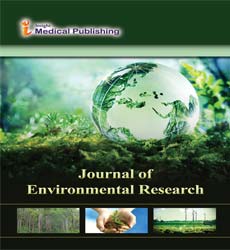DIVERSITY AND DISTRIBUTION PATTERNS OF TIGER BEETLES (COLEOPTERA: CICINDELIDAE) IN LANAO DEL SUR, PHILIPPINES
Abstract
Abstract
Statement of the Problem: Despite the interesting records on tiger beetles, many current localities of occurrence of this group of species in the Philippines are still unrecorded and poorly illustrated. In Lanao del Sur alone for example, diversity of tiger beetles is still a data gap. Therefore, the present study aimed to provide baseline data to fill such data gap. It also identified some potential ecological threats of tiger beetle species in the province as some municipalities of Lanao del Sur are vulnerable to continuous anthropogenic disturbances which can greatly affect and destroy the natural environment of both floral and faunal species including many tiger beetle species.
Methodology: Adult tiger beetles were collected through opportunistic sampling from 9 April to 4 August 2019 in three selected municipalities of Lanao del Sur Province. Collected specimens were preserved and identified in the laboratory. Subsequently, GPS coordinates and elevation of each sampling site were taken during fieldwork. Photographs of sampling sites, habitats, and some species were also taken for documentation. All statistical analyses were performed using Paleontological Statistics (PAST).
Findings: A total of 289 individual tiger beetles were collected belonging to four genera, all of which are new record in Lanao del Sur. Tricondyla (Tricondyla) elongata W. Horn, 1906 (66.8%) found to be the most abundant and most widely distributed species followed by Tricondyla (Stenotricondyla) cavifrons Schaum, 1862 (10.48%), Cylindera discreta elaphroides (11.4%), Calomera angulata (9.7%), Neocollyris cf. albitarsis Erichson, 1834 (1.4%), and Neocollyris similior Horn, 1893 (0.4%). On the other hand, results showed that diversity of species is relatively low although S6 (H’=0.8) and S9 (H’=0.7) indicated highest species diversity. Highest species richness was recorded in S6 (n=3) while S10 (n=1) found to have the lowest species richness. Moreover, results indicate that S9 had the most even species (E’=0.99) while lowest evenness values were observed in S1 (E’=0.59) and S2 (E’=0.60).
Conclusion and Significance: Among the 289 individual studied tiger beetles, T. elongata was the most abundant and widely distributed species indicating its high resilience to different ecological conditions including anthropogenic disturbances. Surprisingly, results showed that diversity of species is relatively low although some sampling sites indicated highest species diversity. Nevertheless, highest species richness was noted in S6 while S9 had the most even species distribution due to the almost equal presence of C. angulata and C. discreta elaphroides in the site. Altogether, the low abundance and diversity of species were likely affected by some anthropogenic pressures and on-site disturbances. This study strongly recommends the need to conserve the natural habitats of tiger beetles in the province.
Open Access Journals
- Aquaculture & Veterinary Science
- Chemistry & Chemical Sciences
- Clinical Sciences
- Engineering
- General Science
- Genetics & Molecular Biology
- Health Care & Nursing
- Immunology & Microbiology
- Materials Science
- Mathematics & Physics
- Medical Sciences
- Neurology & Psychiatry
- Oncology & Cancer Science
- Pharmaceutical Sciences
